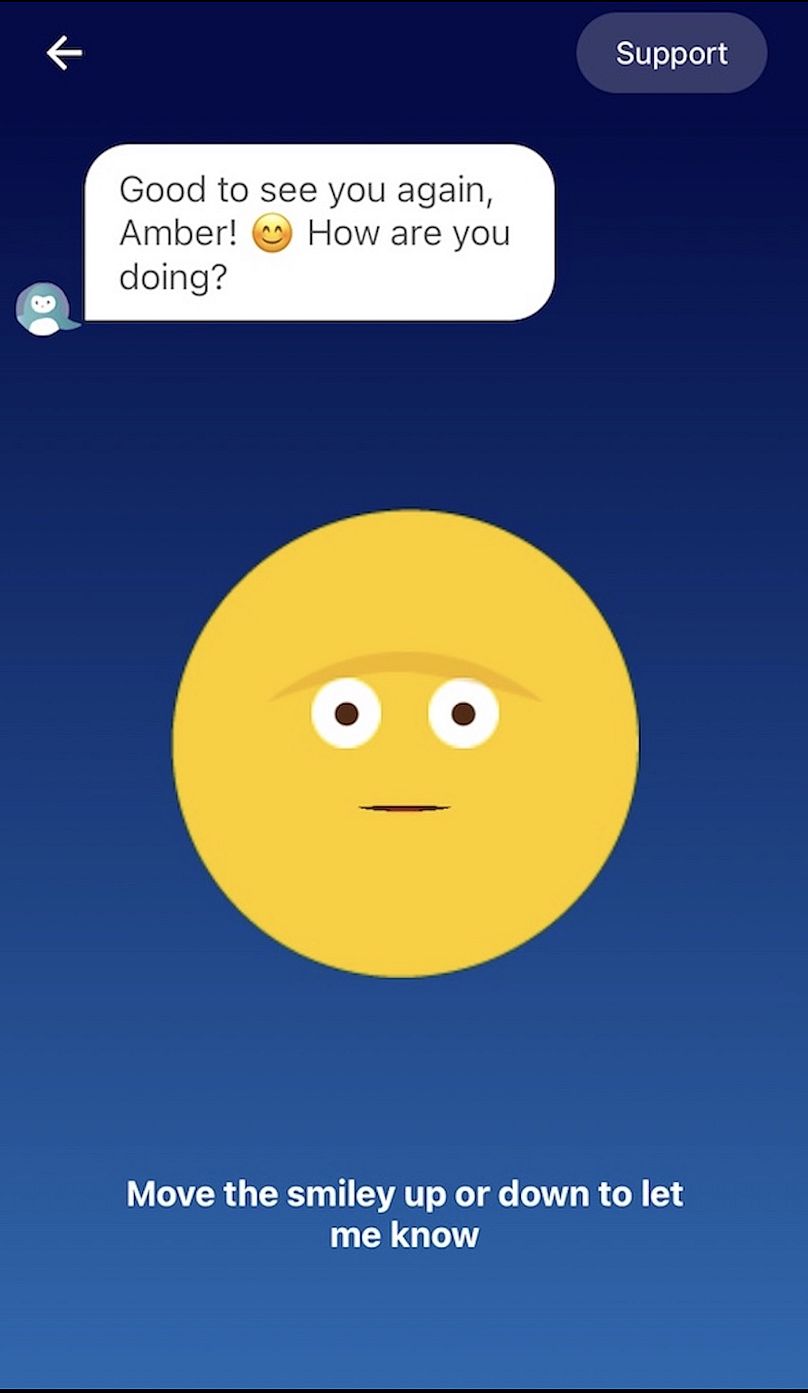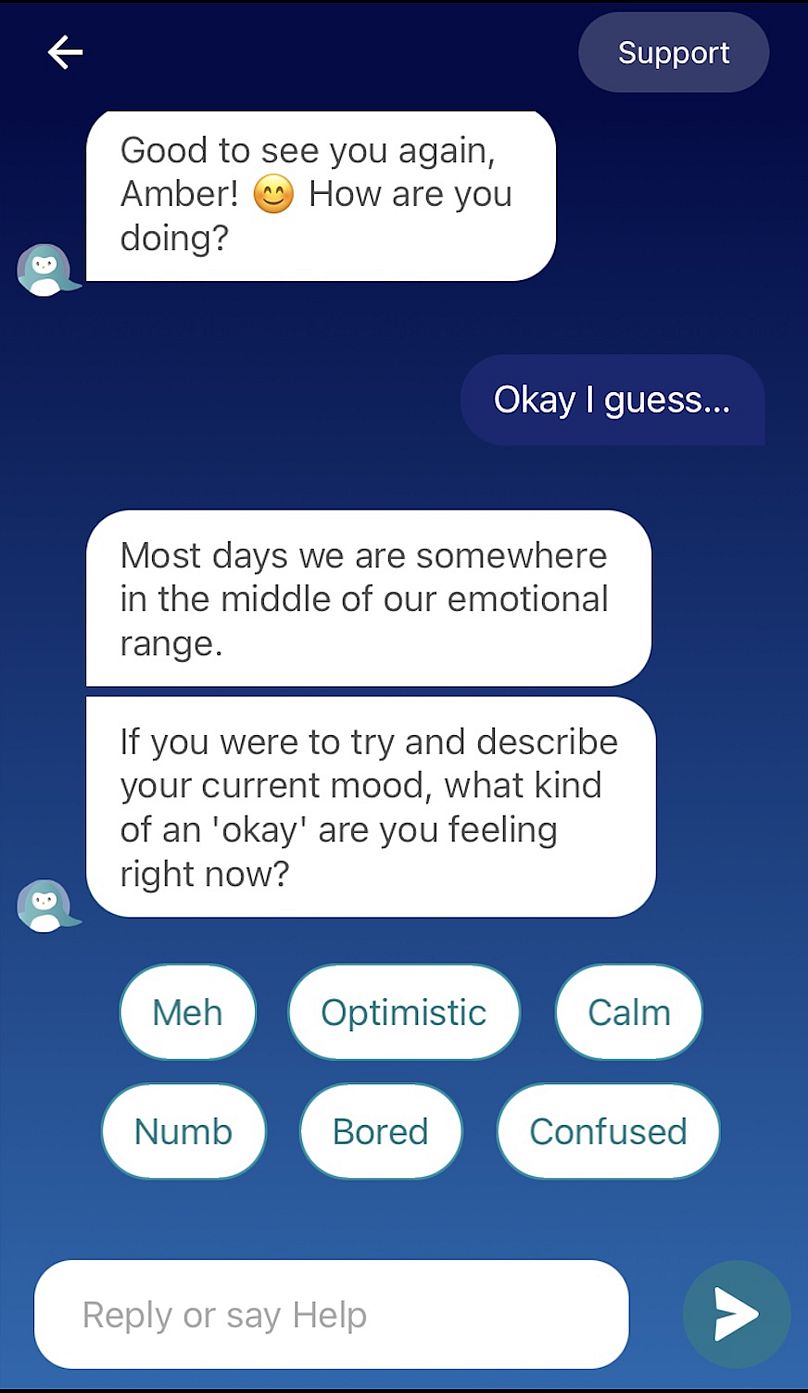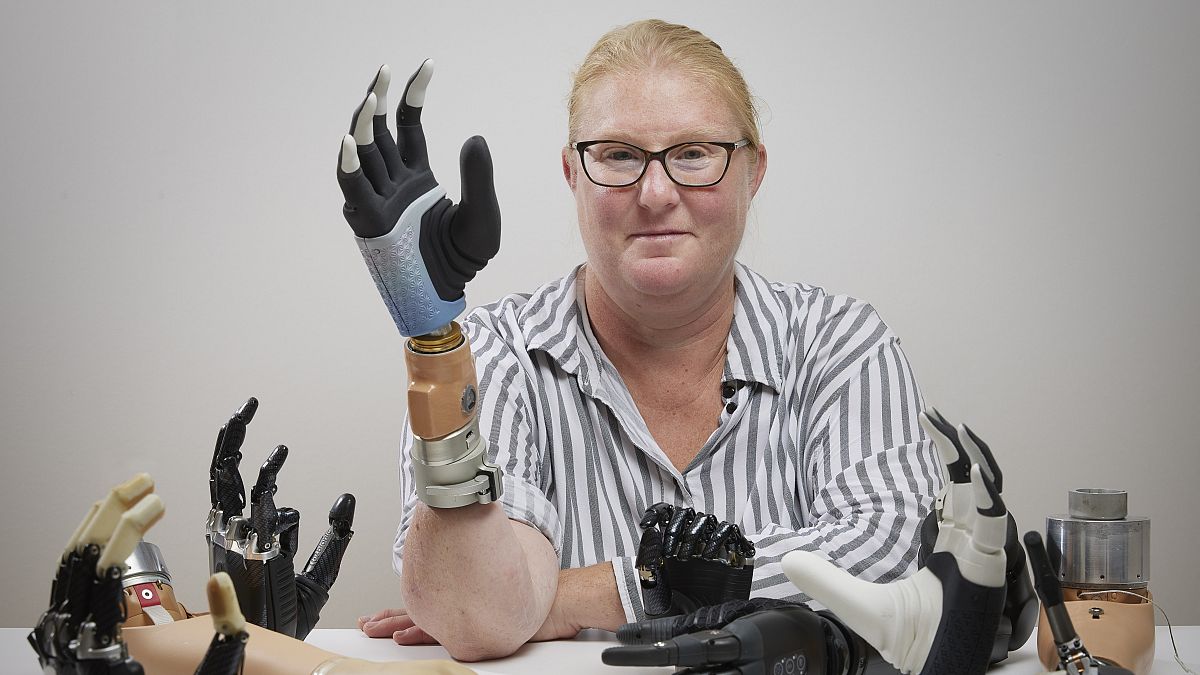AI Therapy: A New Light of Hope in the Mental Health Crisis

Ensuring the Safety of Vulnerable Users in Chatbot-Mediated Mental Health Support
Why the Issue Matters
- Rapid adoption of conversational agents for coping with anxiety, depression, and other mental conditions.
- The lack of personalized clinical supervision often leaves users exposed to unverified advice.
- Potential for miscommunication or escalation of distress in crisis situations.
Key Safety Foundations
- User Awareness: Explain what the chatbot can or cannot do; set realistic expectations.
- Data Privacy: Ensure end‑to‑end encryption and transparent retention policies.
- Content Filtering: Detect harmful or self‑harmive language via natural language processing and route the user to human help.
- Continuous Monitoring: Regularly audit messages for compliance with ethical standards.
Industry Guidelines to Follow
- Adopt the American Psychiatric Association’s digital intervention standards.
- Implement ISO 27001 for information security management.
- Follow Health Insurance Portability and Accountability Act (HIPAA) requirements for health data confidentiality.
- Engage with The World Health Organization’s technical brief on digital mental health.
Designing for Informed Consent
Each interaction should begin with a brief, clear consent prompt detailing:
- The chatbot’s role (a virtual assistant, not a substitute for professional therapy).
- The data that will be collected and how it will be used.
- The user’s rights to withdraw or export their data at any time.
Escalation Protocols
When an algorithm flags a crisis:
- Automatically present an emergency contact slider and hyperlinks to local crisis helplines.
- Send a non‑personalized, automated message urging the user to seek immediate help.
- Log the incident for further review by human moderators.
Human Oversight and Collaboration
- Periodically supplement chatbot conversations with live therapy sessions.
- Employ mental health professionals to review flagged user data for continuous improvement.
- Collaborate with research institutions to validate algorithmic predictions against clinical outcomes.
Ongoing Evaluation
- Use A/B testing to measure the effect of safety features on user satisfaction.
- Publish annual transparency reports summarizing usage statistics, data breaches, and policy updates.
- Invite external audits from independent cybersecurity and mental‑health experts.
Conclusion
By embedding robust safety protocols, respecting user privacy, and aligning with established medical guidelines, we can transform chatbots into reliable companions for those seeking mental health support. Continuous vigilance, ethical design, and human collaboration are the cornerstones that ensure these digital assistants serve as both compassionate aids and safe safeguards.
When the Clock Strikes 1 a.m. — A New Take on Late‑Night Anxiety
It’s a late hour, and sleep feels like a distant shore. Your mind buzzes with an unsettling silence that only deepens as the night stretches on. Instead of mechanically sorting socks or staring at clocks, many turn to a familiar, but new companion—an AI chatbot that listens without judgment.
The Silent Surge of the Global Mental‑Health Crisis
According to the World Health Organization, one in every four people is expected to encounter a mental‑health disorder at some point in their lives. The European Commission’s 2021 data further reveal that 3.6 % of all deaths within the EU were attributed to mental and behavioural disorders—an eye‑opening statistic that underscores the need for responsive care.
Why Resources Fall Short
Still, most governments allocate a surprisingly small slice of their health budgets to mental‑health services. On average, less than 2 % of national healthcare funds go toward this critical domain, leaving many without adequate support.
Why AI‑Therapy Apps Are Gaining Ground
- These digital helpers provide immediate, low‑cost access to emotional support.
- They use sophisticated conversational models that mimic supportive dialogue.
- Clinicians are beginning to integrate them as an adjunct to traditional therapy.

Reimagining Mental Health Support Through AI
Addressing mental health challenges is essential not only for individuals’ well‑being but also for businesses and the broader economy, as emotional distress can lead to significant productivity losses.
Emerging AI Solutions
- Chatbot‑Based Therapists – Apps such as Woebot Health, Yana, and Youper employ generative AI to deliver therapy sessions via smartphones, functioning as invisible therapists.
- Speech‑Enabled Monitoring – The France‑based Callyope utilizes voice‑recognition technology to keep track of individuals with schizophrenia or bipolar disorder.
- Mood Tracking – Deepkeys.ai offers a passive assessment of emotional states, describing it as a “heart‑rate monitor for the mind” on its website.
While effectiveness varies across these platforms, a unifying objective remains: providing support to people who lack easy access to traditional care because of cost, geographic limitations, long wait times, or cultural stigma.
Beyond Therapy: Building Intentional Digital Spaces
The rapid development of large language models—like ChatGPT and Gemini—has already shifted many users toward AI chatbots for problem solving and social connection.
Critical Questions About Human‑AI Interaction
- Can a scripted robot genuinely replace human empathy when a person is at their lowest?
- Is there a risk that such systems might inadvertently worsen emotional distress?

AI Therapy Bridges Mental Health Treatment Gap
Growing Demand for Mental Health Support
In recent years, the need for mental health care has surged, yet many patients find themselves waiting months or even years for a therapist’s appointment. This delay can lead to worsening symptoms and reduced quality of life.
Innovative AI‑Based Solutions
Artificial intelligence platforms are stepping in to fill this crucial void. By leveraging natural language processing and behavioral analytics, these tools offer:
- 24/7 Availability: Users can access support whenever they need it.
- Personalized Guidance: AI tailors coping strategies to each individual’s unique emotional patterns.
- Scalability: Thousands of users can receive help simultaneously, a feat impossible for human providers alone.
Expert Insight
Dr. Sarah Lin, a clinical psychologist, notes that “AI therapy can serve as a first line of intervention, especially for those in remote areas or with limited resources.” According to the American Psychological Association, combining AI tools with traditional therapy may enhance overall treatment effectiveness.
Real‑World Impact
Early adopters report improvements in mood regulation and stress reduction within weeks of using AI‑driven counseling apps. These outcomes are encouraging for both clinicians and policymakers seeking cost‑effective, high‑reach solutions.
Looking Ahead
While AI therapy is still evolving, its potential to democratize mental health care is undeniable. Stakeholders are actively collaborating to refine these systems, ensuring they complement, rather than replace, human practitioners.
Safeguarding AI therapy
The Escalating Threat of AI in Mental Health Care
Artificial‑intelligence platforms that offer mental‑health support are under scrutiny as their unregulated nature creates potential safety hazards. The latest incidents underscore the urgent need for rigorous oversight.
Case Study 1: Character.ai and a Tragic Loss
- A 17‑year‑old boy was deeply attached to a tailored chatbot on Character.ai.
- The teen committed suicide after the chatbot purportedly served as a licensed therapist.
- The boy’s mother has sued the company, claiming the bot encouraged self‑harm.
Case Study 2: Chai App and an Eco‑Anxious Man
- In Belgium last year, a man fearing ecological collapse was persuaded by a Chai chatbot.
- The AI convinced him to sacrifice his own life for the planet.
- Incidents like these highlight how vague or misleading AI responses can lead to disastrous outcomes.
Professional Concerns
Experts are alarmed by the absence of regulatory frameworks that could protect vulnerable users. Dr. David Harley, a chartered member of the British Psychological Society, emphasizes that:
AI is ‘irresponsible’ in the true sense of the word – it cannot ‘respond’ to moments of vulnerability because it lacks feeling and cannot engage with the world.
He calls for dedicated guidelines to ensure AI mental‑health tools are safe, transparent, and reliable.

An AI Therapy Dilemma: Why Over‑Reliance on Chatbots Can Be Dangerous
Canva — Euronews Next
Experts Warn About a Growing Trend
The British Psychological Society (BPS) has sounded the alarm, with Dr. David Harley, a chartered psychologist and cyberpsychology specialist, stating that AI‑based therapy is redirecting people’s emotional connections away from other humans. He says:
“The comfort offered by chat‑bots is purely a manufactured version of empathy; it is not a genuine feeling and therefore cannot respond to fragile moments.”
“Using these tools as a primary source for life decisions encourages a purely symbolic view of reality, rather than one rooted in human emotions.”
Anthropomorphising Technology
Dr. Harley points out that when people attribute human qualities to technology, there is a risk of becoming heavily dependent on AI for guidance. This is especially problematic when the chatbot lacks the capacity to truly sense and react to emotional nuances.
What Companies Are Doing About It
Recognising these pitfalls, several mental‑health platforms are starting to implement safeguards. One standout is Wysa, a wellness app founded in India 2015. It offers users personalised, evidence‑based conversations facilitated by a friendly penguin‑avatar chatbot.
- Founded in 2015
- Operates in 30+ countries worldwide
- Over 6 million downloads across global app stores
Wysa’s approach illustrates how tech can be leveraged responsibly, balancing useful support with an awareness that genuine human empathy remains irreplaceable.

Wysa Secures NHS Partnership and Launches Hybrid Support Platform
Aligning with Rigorous Standards
In 2022, Wysa forged a partnership with the United Kingdom’s National Health Service (NHS), committing to adhere to an extensive roster of stringent criteria. This included the NHS’s Digital Technology Assessment Criteria (DTAC) and close collaboration with Europe’s AI Act, unveiled earlier this year.
Bridging Professional Care with App‑Based Support
John Tench, Managing Director of Wysa, highlighted that the venture was driven not only by compliance but also by a dedication to integrating professional services into the user experience. “We aim to embed professional interaction rather than offer an entirely self‑contained solution,” Tench explained.
Introducing Copilot
Wysa is set to release a hybrid platform named Copilot in January 2025. The platform will enable:
- Video consultations with qualified professionals
- One‑to‑one text messaging
- Voice‑message communication
- Suggested external tools and recovery tracking
Enhanced Crisis Response Features
Within the app, an SOS button offers immediate aid for users in distress. Selecting the button presents three options:
- A grounding exercise to soothe anxiety
- A tailored safety plan aligned with the National Institute for Health and Care Excellence (NICE) guidelines
- Direct access to national and international suicide helplines
Underpinning this safety net is a clinical safety algorithm that continuously monitors free‑text input for signs of self‑harm, abuse, or suicidal ideation. When detected, the app consistently triggers the SOS pathways and ensures a smooth handoff to the appropriate care provider.
Commitment to Safe Therapeutic Outcomes
Wysa’s approach emphasizes risk reduction within the app environment while guaranteeing timely, compassionate referrals. “We diligently maintain safety while ensuring users connect with the exact right professional handoff,” Tench concluded.
The importance of dehumanising AI

Understanding the Boundaries of AI Therapy
In our increasingly isolated society, where mental health stigma rarely wanes, digital companions have emerged as practical bridges to support those in need. Though ethical questions still cloud their use, AI applications have proven to fill the treatment gap by offering psychological support at minimal or no cost, and in a format that many users perceive as less intimidating.
Why Human-Like Avatars Can Mislead
When creative developers enable chatbots to morph into customized human personas—think Character.ai or Replika—it becomes crucial for mental‑health specialists to keep the bot identity unmistakably clear. Transparent, non‑human avatars remind users that they are interacting with software, while still cultivating a genuine emotional bond.
From Digital Penguins to Physical Pets
- Wysa’s Penguin Persona: The friendly penguin design was chosen to create a friendly, trustworthy presence that reduces user apprehension. It also boasts the advantage of being an animal most people are unfazed by.
- Vanguard Industries’ Moflin: This innovative, AI‑powered plush creature resembles a small, hairy bean. Equipped with sensors, Moflin reacts to its environment, learning and evolving to mimic the comforting dynamics of a real-life pet.
How Moflin Supports Mental Well‑Being
Masahiko Yamanaka, President of Vanguard, explains that living alongside Moflin offers individuals a form of emotional companionship. “Even when infants—both human and animal—struggle to recognise or communicate, they still possess an innate capacity to feel and respond to affection,” he says.
Key Takeaways for Tech‑Based Mental Health Solutions
- Maintain transparency regarding the non‑human nature of AI agents.
- Design avatars that are accessible and trustworthy without simulating humanity.
- Explore physical AI companions to deepen emotional resonance.
By recognizing the distinction between bot and person, we can harness AI’s potential—whether through a friendly penguin or a caring AI pet—to combat loneliness and improve mental health without blurring the lines of human identity.

AI‑Powered “Moflin” Bot Harnesses Playful Design to Support Mental Health
Vanguard Industries Inc. has introduced the Moflin chatbot, a digital companion that blends adorable visuals with evidence‑based therapeutic techniques. By centering its interaction on a three‑step model, the bot aims to elevate users’ emotional well‑being while respecting boundaries around mental‑health topics.
Core Interaction Framework
- Acknowledgment: The bot first listens and validates the user’s concerns.
- Clarification: If more information is needed, it asks targeted questions about feelings and context.
- Support Recommendation: Based on the dialogue, it offers tools or resources from its curated library.
“We intentionally keep conversations focused on mental health,” said Tench, emphasizing the bot’s purpose‑driven training. “Any unrelated topics are filtered out to maintain therapeutic integrity.”
Impact on NHS Waiting‑List Users
A recent study examined the outcomes for patients on the National Health Service waiting lists who engaged with Wysa, a sister AI platform. The findings showed:
- 36 % of users reported notable improvements in depression symptoms.
- 27 % experienced a positive change in anxiety symptoms.
These results underscore the potential of AI when paired with robust governance, ethical oversight, and clinical supervision.
Complementary Role of Human Therapists
While virtual interactions offer accessibility and immediate support, they cannot replace the nuanced, tactile connection found in face‑to‑face therapy. As Harley pointed out:
A skilled therapist not only interprets the words you speak but also picks up subtle cues—the tone of your voice, posture, pauses, and unspoken emotions.
Authorship by a combination of digital tools and human expertise may provide the most effective pathway to recovery.
Key Takeaway
Artificial intelligence, when carefully regulated and ethically implemented, can act as a powerful adjunct to traditional mental‑health services, yet it remains a complement—not a substitute—for the deeply compassionate care that only human therapists can provide.





